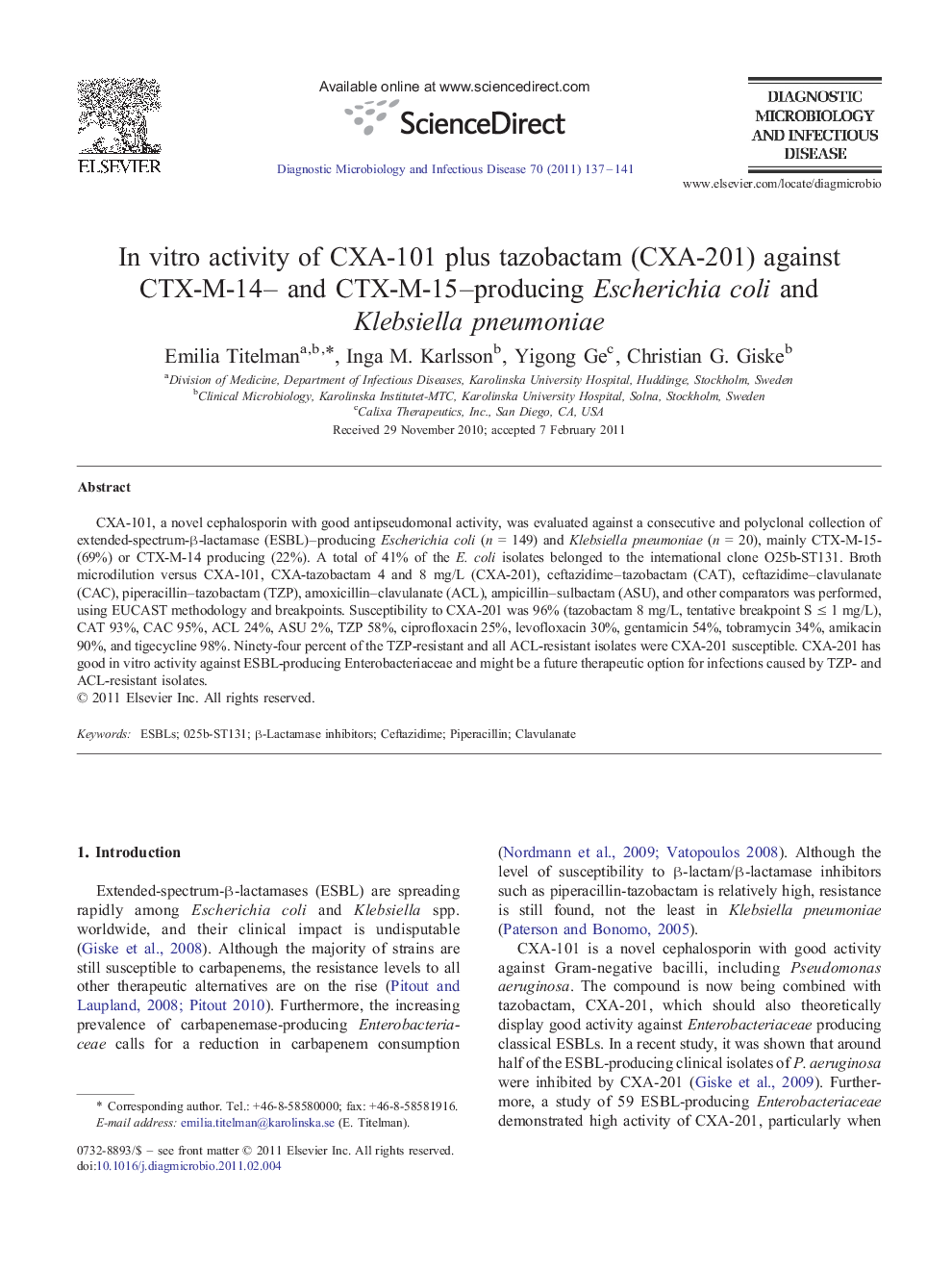| Article ID | Journal | Published Year | Pages | File Type |
|---|---|---|---|---|
| 6116586 | Diagnostic Microbiology and Infectious Disease | 2011 | 5 Pages |
Abstract
CXA-101, a novel cephalosporin with good antipseudomonal activity, was evaluated against a consecutive and polyclonal collection of extended-spectrum-β-lactamase (ESBL)-producing Escherichia coli (n = 149) and Klebsiella pneumoniae (n = 20), mainly CTX-M-15- (69%) or CTX-M-14 producing (22%). A total of 41% of the E. coli isolates belonged to the international clone O25b-ST131. Broth microdilution versus CXA-101, CXA-tazobactam 4 and 8 mg/L (CXA-201), ceftazidime-tazobactam (CAT), ceftazidime-clavulanate (CAC), piperacillin-tazobactam (TZP), amoxicillin-clavulanate (ACL), ampicillin-sulbactam (ASU), and other comparators was performed, using EUCAST methodology and breakpoints. Susceptibility to CXA-201 was 96% (tazobactam 8 mg/L, tentative breakpoint S ⤠1 mg/L), CAT 93%, CAC 95%, ACL 24%, ASU 2%, TZP 58%, ciprofloxacin 25%, levofloxacin 30%, gentamicin 54%, tobramycin 34%, amikacin 90%, and tigecycline 98%. Ninety-four percent of the TZP-resistant and all ACL-resistant isolates were CXA-201 susceptible. CXA-201 has good in vitro activity against ESBL-producing Enterobacteriaceae and might be a future therapeutic option for infections caused by TZP- and ACL-resistant isolates.
Related Topics
Life Sciences
Immunology and Microbiology
Applied Microbiology and Biotechnology
Authors
Emilia Titelman, Inga M. Karlsson, Yigong Ge, Christian G. Giske,
